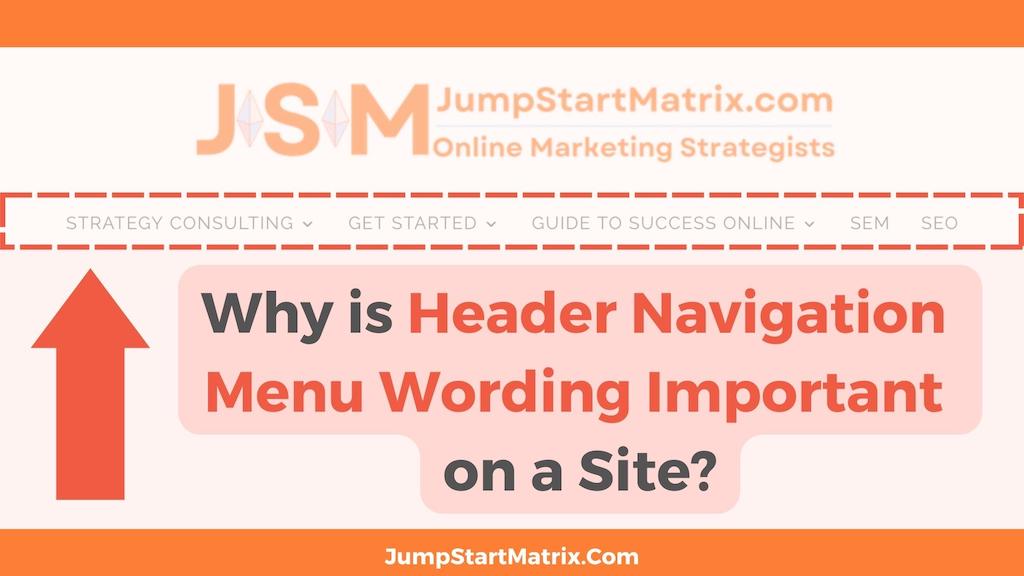The wording of your Header Navigation Menu can (and does) play a role in how Google crawls and indexes your website.
Google’s crawlers analyse the content of your site’s pages (from top to bottom) to understand their context and relevance for people typing in their search “queries”
So your Header Navigation menu is important for SEO.
Google explains it’s “process:
“Google Search works in three stages, and not all pages make it through each stage:
- Crawling: Google downloads text, images, and videos from pages it found on the internet with automated programs called crawlers.
- Indexing: Google analyzes the text, images, and video files on the page, and stores the information in the Google index, which is a large database.
- Serving search results: When a user searches on Google, Google returns information that’s relevant to the user’s query.”
Here are a few reasons why the wording of the Header Navigation Menu is important in this context and should not be be left as the generic “Home About Services Contact” as most designers do!
Why is relevant Header Navigation Menu wording important to your visitors as well as Google?
- The wording of the Header navigation menu is crucial for your visitor’s UX (User Experience)
- Google values websites that provide a positive user experience- and so an intuitive, descriptive menu that helps visitors easily navigate your site to quickly find the information they want or need is critical!
- A good UX can lead to increased engagement by your traffic ( visitors) with longer visit duration and lower Bounce rates, which indirectly signal quality to Search Engines like Google.
- THINK as your “ideal Client”/consumer would – What do you expect (hope) to see in that Header Navigation?
Hint: Clear Words that tell us what your product Or business IS & DOES! eg Not generic “Services” but “Business Consulting”
Keyword relevance: The wording used in the Header Navigation Menu can indicate the main topics or categories of your website.
IF your menu includes relevant keywords related to your content, it can help Google understand the focus of your site and potentially improve its visibility in relevant SERPs (Search Engine Results Pages)
(Of course, avoid keyword stuffing or using irrelevant keywords solely for SEO purposes, as that is old school “Black Hat” SEO)
Site structure and hierarchy: The wording of the navigation menu provides Google with an understanding of the structure and hierarchy of your website.
It helps Google determine the relationship between different pages and how they are organised.
This information can impact how your site is indexed and how search engine results pages (SERPs) display your website’s structure in sitelinks.
Internal linking: The navigation menu often serves as a primary means of internal linking on your website.
Google considers internal links when determining the importance and relevance of different pages within your site.
By using clear and descriptive wording in your Header Navigation menu, you can create meaningful internal links that guide both users and search engines to important pages on your site.
It’s important to note that while the wording of the Header Navigation Menu is a factor in SEO, it is just one of many aspects that Google’s crawlers consider.
Other factors like content quality, relevance, backlinks, mobile-friendliness and page load speed also impact how Google ranks and indexes your site.
While it’s beneficial to optimise your Header Navigation menu wording for search engines, it should always prioritise clarity, UX and meaningful organisation for your website’s visitors.
By providing valuable content and a user-friendly interface, you can positively impact both Google’s crawling process and the overall success of your website.
Not sure if your site IS working well?
JSM provide a range of Site Audits and you need to understand “Flow” and “Friction” on a site.

